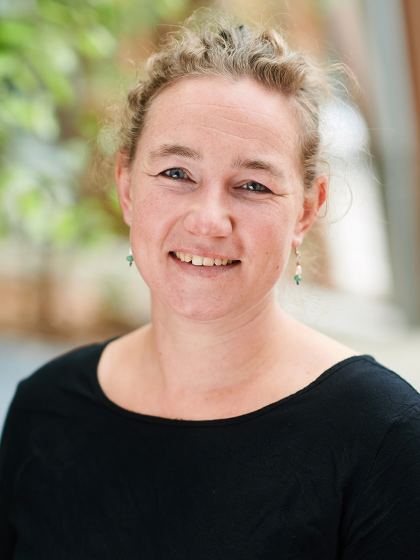Opinion | The biodiversity crisis cannot be solved with more nature reserves

The Netherlands has had national parks for about 100 years. In these parks and other protected nature reserves, nature is protected as much as possible, in an effort to maintain biodiversity. Nature conservation organizations are primarily concerned with keeping the often vulnerable, barren nature reserves viable. However, research shows that, although more nature reserves are being added, biodiversity continues to decline.
Written down by Jaap Ploeger, Corporate Communication UG
Nature conservation and nature management do not automatically lead to improved biodiversity. According to Jorien Zevenberg, lecturer in Science and Society and PhD candidate in Nature Management, we should focus on the transition areas between nature and farmland, since that is where real gains can be made. ‘It is not only insects and nature lovers who benefit from the interweaving of nature and agriculture, but also farmers. We need to integrate nature and agriculture more and better.’
Oases in the landscape
‘It no longer serves us to believe that we can solve the biodiversity crisis by creating more nature. In fact, our only hope is that we can stop the downward curve. This requires a different way of thinking. Unfortunately, adding nature reserves in the Netherlands has not led to a sustainable solution for the overall decline in plant and insect species diversity. We must therefore look beyond these often fragmented nature reserves.’
Change in mentality
‘We need to focus much more on connecting nature reserves with the surrounding farmland. These transitional areas are important, but are still often used intensively by farmers. If we can design these agricultural areas to act more as buffer zones, that alone can make a difference. This requires a change in mentality not only on the part of farmers, but also on the part of nature conservation organizations. Focusing solely on nature reserves does not seem to work. And we can demand that farmers farm in a more nature-inclusive way, but what does that mean, and more importantly, who will pay for it? Many different aspects of the system need to change to make it possible for farmers to farm in a truly sustainable way.
What can be done?
‘Essentially, nature conservation organizations and farmers agree that something needs to be done. Farmers also benefit from insect diversity because they pollinate their crops and maintain balance in the ecosystem. Farmers already have a lot on their plate. They often try to comply with all kinds of government requirements, but these change every few years. Just as you’ve finished building an emission-free barn, you suddenly hear you have to make your grassland richer in wild plants. You do see that nature conservation organizations and farmers are increasingly sitting down together to see what is possible, so that farmers can continue to earn a good living without biodiversity in a given area declining further.’
The farmer as nature manager
‘The Agricultural Nature and Landscape Governance (Agrarisch Natuur- en Landscapsbeheer, ANLb) scheme is already issuing grants for more natural management of farmland. Think of flower-rich strips around a plot, or the creation of a wet pool in a meadowland. Such schemes just need to be a bit more stable and sustainable; farmers want to know where they stand. Moreover, local conditions vary enormously from area to area, and farmers who want to farm in a more sustainable way are sometimes thwarted by cumbersome regulations. We need a more customized approach at area level. Small-scale initiatives and Living Labs (for example in the Bollestreek, adjacent to the Hollandse Duinen National Park), in which scientists work together with nature conservation organizations and farmers to look at more nature-inclusive management, can provide insights that can also be applied elsewhere.’
Difficult puzzle
‘I admit that it is a difficult puzzle. If we really want to manage our landscape differently and give biodiversity a chance, we have to pull several levers at the same time. Farmers and nature conservationists can want all they want, but long-term contracts in the agro-industry and bank loans are putting many farmers in a difficult situation. Fortunately, there is growing attention for bottom-up initiatives, but I think there is still a lot that needs to be done to get the whole system on board. If every farmer were to produce a little more sustainably, that alone could make a difference to biodiversity.’
More information
More news
-
24 November 2025
ModAlgae BV signs licensing agreement with the UG
-
20 November 2025
New conductive hydrogel is as soft as the brain
